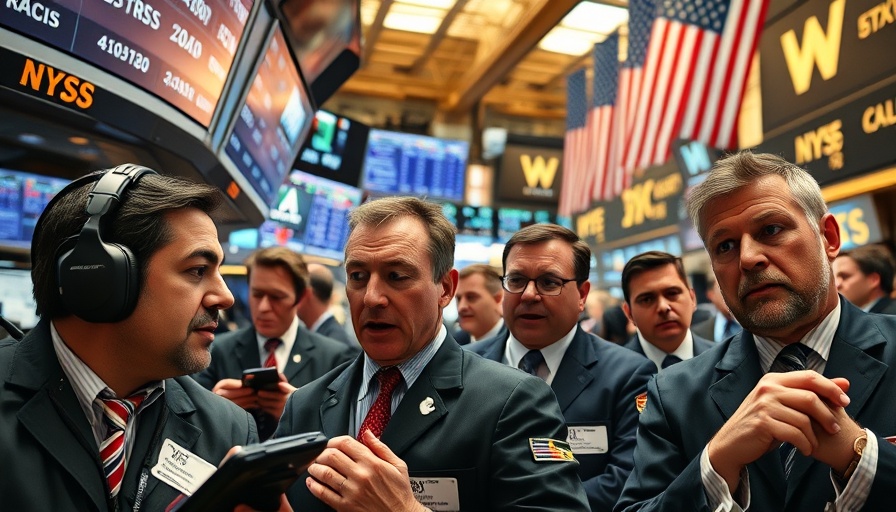
Wall Street Hits New Heights: The Driving Forces Behind Record Stocks
On a notable Thursday, Wall Street celebrated another triumph as stock indexes soared to new all-time highs, mainly driven by a surge in technology stocks. The S&P 500 edged up by 0.3%, marking its second consecutive record high. The Dow Jones Industrial Average managed to recover from early losses, climbing 0.2% and surpassing its previous record set just last week. The Nasdaq composite also joined the upward trend, rising 0.5%, closing in on its peak performance from two weeks prior.
Understanding Market Dynamics: Why Tech Stocks are Thriving
While the majority of companies in the S&P 500 saw declines, gains in technology and communication services stocks significantly balanced the scale. Companies such as Broadcom and Alphabet witnessed gains of 2.8% and 2%, respectively, showcasing the critical role tech giants play in today's financial landscape. Bill Northey, a senior investment director at U.S. Bank Asset Management, noted the undeniable influence of consistent capital expenditure in the technology sector, which has become the main driver of these gains.
The Impact of Earnings Reports: Mixed Signals from Major Companies
Market optimism was tempered by a mix of earnings reports that reflected the ongoing volatility in key sectors. For instance, Nvidia—considered a pulse check for the artificial intelligence (AI) market—reported quarterly earnings and revenue that surpassed analysts' expectations. However, their acknowledgment of slower sales growth for AI chipsets raised eyebrows. This illustrates the complexity investors face; an overall positive report can still hold underlying concerns, impacting stock performance in unpredictable ways.
The Retail Sector’s Struggles: An Inside Look
While technology flourished, the retail sector faced its own set of challenges. Several well-known retailers reported disappointing earnings. Best Buy fell 3.7% as uncertainties over tariffs clouded its outlook. Similarly, Urban Outfitters and Dick’s Sporting Goods posted better-than-expected quarterly results yet still saw stock declines due to overarching concerns regarding inflation and tariff pressures. These situations illustrate how broader economic policies can directly impact industry leaders and investors alike.
Analysts Weigh In: Looking Ahead to Economic Trends
As August winds down, the market appears set for further momentum; both the S&P 500 and Dow are tracking toward their fourth consecutive monthly gains, with the Nasdaq not far behind, eyeing its fifth. However, analysts maintain that a cautious approach is warranted as economic indicators fluctuate. Recently released government reports indicated a decrease in unemployment benefit applications, suggesting that employers are retaining staff, a positive sign in uncertain economic times.
What Does This Means for Investors? Taking Informed Steps Forward
For investors, understanding the intricate dynamics at play—technology's prowess, consumer retail challenges, and economic signals—is crucial. As the market continues to flirt with record highs, keeping a close watch on earnings reports and macroeconomic trends will help investors make informed decisions moving forward. This market environment presents opportunities but also backdrop concerns that should not be overlooked.
 Add Row
Add Row 
 Add
Add 


Write A Comment